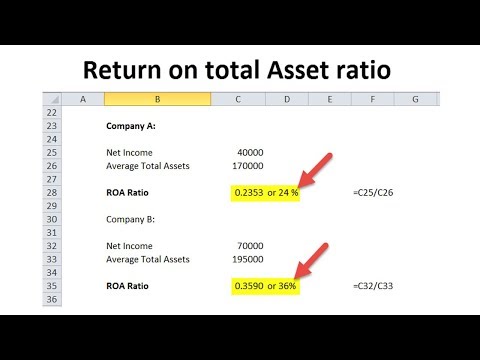
The Dividend Yield shows how much a company pays out in dividends each year relative to its share price. In the absence of any capital gains, the dividend yield is the return on investment for a stock. Use the Debt to Tangible Net Worth Calculator above to calculate the debt to tangible net worth from your financial statements. Use the Debt Ratio Calculator to calculate the debt ratio from your financial statements. The Debt Ratio indicates what proportion of debt a company has relative to its assets.
- The calculations provided should not be construed as financial, legal or tax advice.
- Use the Times Interest Earned Calculator above to calculate the times interest earned from you financial statements.
- Ratio analysis can be used to understand the financial and operational health of a company; static numbers on their own may not fully explain how a company is performing.
- There is often an overwhelming amount of data and information useful for a company to make decisions.
- Return on Common Equity measures a corporation’s profitability by revealing how much profit a company generates with the money shareholders have invested.
Use the Earnings per Share Calculator above to calculate the earnings per share from your financial statements. Use the Profit Margin Calculator above to calculate the profit margin from your financial statements. Use the Return on Common Equity Calculator above to calculate the return on common equity from your financial statements. Use the Return on Equity Calculator above to calculate the return on equity from your financial statements. Use the Current Ratio Calculator above to calculate the current ratio from your financial statements.

What Is an Example of Ratio Analysis?
Then, analyze how the ratio has changed over time (whether it is improving, the rate at which it is changing, and whether the company wanted the ratio to change over time). Income from Unleveraged Assets is the income generated by the assets funded by shareholders equity and operations. The Debt to Tangible Net Worth Ratio is a measure of a company’s financial leverage to the tangible asset value of owner’s equity. It indicates what proportion of equity and debt the company is using to finance its tangible assets. Use the Asset turnover calculator above to calculate the asset turnover from your financial statements. Return on Common Equity measures a corporation’s profitability by revealing how much profit a company generates with the money shareholders have invested.
Why Is Ratio Analysis Important?
It is based on information and assumptions provided by you regarding your goals, expectations and financial situation. The calculations provided should not be construed as financial, legal or tax advice. In addition, such information should not be relied upon as the only source of information. This information is what are examples of cost of goods sold supplied from sources we believe to be reliable but we cannot guarantee its accuracy.
It doesn’t involve one single metric; instead, it is a way of analyzing a variety of financial data about a company. A regular review of your company’s financial ratios can help you focus on areas that may need improvement. Liquidity, efficiency, and profitability ratios, compared with other businesses in your industry, can highlight any strengths and weaknesses you might have over your competition. It is also important to compare your ratios over time in order to identify trends.
What Is Ratio Analysis?
Use the Du Pont Analysis Calculator above to calculate the Du Pont Ratios from your financial statements. This is used for forecasting and to set the expected sales every day over an evenly distributed sales forecast. A ratio is the relation business etiquette in correspondence between two amounts showing the number of times one value contains or is contained within the other.
The measure gives an idea to the leverage of the company along with the potential risks the company faces in terms of its debt-load. Working Capital Turnover measures the depletion of working capital to the generation of sales over a given period. This provides some useful information as to how effectively a company is using its working capital to generate sales. Use the Average Days Sales Calculator to calculate the average days cash flow statement sales from your financial statements. Accounts Receivable Turnover is used to quantify a firm’s effectiveness in extending credit as well as collecting debts. The receivables turnover ratio is an activity ratio, measuring how efficiently a firm uses its assets.
Market Value Ratios
Financial ratios are created with the use of numerical values taken from financial statements to gain meaningful information about a company. Ratio analysis can be used to understand the financial and operational health of a company; static numbers on their own may not fully explain how a company is performing. Though this seems ideal, the company might have had a negative gross profit margin, a decrease in liquidity ratio metrics, and lower earnings compared to equity than in prior periods.